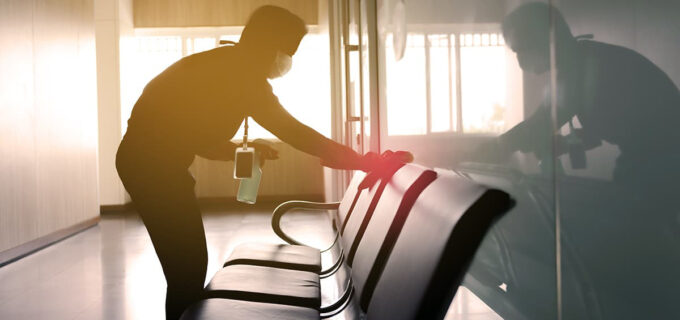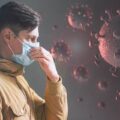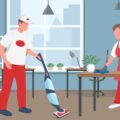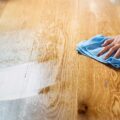Office Surfaces and Equipment; the need for Continuous Antimicrobial Protection
For somewhat obvious reasons, many scientific studies have been conducted and research papers published on the subject of disease transmission and hospital-acquired infection as a direct result of disease transmission via inanimate surfaces and objects. Of course, the possibility (and therefore the risk) for pathogenic organisms to be transferred in this way; from person to person via surfaces and objects, yet beyond the physical boundaries of a healthcare facility are actually greater due to lower standards of hygiene and cleanliness.
Therefore, there is much we can learn from the research conducted in the healthcare industry by transposing it into other environments such as offices or other commercial settings where many different people touch the same surfaces every day, day in day out, but usually without the benefit of a hospital-grade cleaning and disinfection programme to mitigate the ever-present risk of cross-contamination and re-infection.
The American Centers for Disease Control and Prevention (CDC) has very clear and explicit recommendations on how clinical environments should be cleaned, sanitised, disinfected and in some cases even sterilised to prevent the contraction of a Hospital Acquired (or Nosocomial) Infection (HAI). However, in the workplace, the risks might be even greater due to the lack of such stringent infection control guidelines and their implementation.
As any healthcare worker knows from their training, cleanliness is considered next to Godliness and much of their working day is spent diligently keeping surfaces, objects and equipment clean and disinfected to prevent the spread of disease from one person to another. These healthcare workers will also know that there is a significant professional challenge in balancing the need to keep things clean whilst maintaining an efficient flow of patients through the facility. Well, exactly the same challenges apply in an office environment too!

The Problem of Constant Contamination and Re-Contamination
The first major challenge in any setting (healthcare or commercial) is that the environment is continuously becoming contaminated and then re-contaminated almost immediately after cleaning and disinfection.
In healthcare settings, despite their rigorous cleaning and disinfection protocols, almost 20% of all Hospital Acquired Infections have been shown to emanate from sources other than the patients themselves, as in surfaces, objects or equipment. Therefore, the risk of cross-infection by the same route, whether in offices or other commercial buildings should not be ignored. All surfaces, objects and equipment, wherever they may be are potentially a ‘vehicle of infectious disease transmission’ and should be treated accordingly. However, what the research figures are also clearly indicating is the following; that despite the rigorous cleaning, sanitation and disinfection, up to a fifth of all Hospital Acquired Infections are a direct result of the failure of these disinfection protocols to adequately mitigate the risk of indirect infection.
In reality, the problem does not actually lie with a failure in the disinfection protocols to effectively kill pathogenic organisms. The problem lies in the fact that once successfully disinfected and cleaned, the very next person to touch it could re-contaminate it again with highly contagious pathogenic organisms. Therefore, if the evidence suggests that we can no longer rely solely on repetitious and rigorous cleaning, sanitation and disinfection to keep us free from cross-infection, we clearly need a different, more reliable way of keeping surfaces free from microorganisms.
The Emergent Necessity for Long-Lasting Continuous Antimicrobial Coatings
The scientific research and empirical evidence have overwhelmingly shown that surfaces and objects that have become contaminated with pathogenic organisms can significantly contribute to the transmission of contagious diseases. Never, in the history of mankind, has this fact been so widely acknowledged and accepted as now, with almost every country, state, province, city, town or village in the world attempting to control the spread of Covid-19, a highly contagious, infectious and potentially fatal disease caused by the Novel Coronavirus. In the context of Covid-19 alone, the studies have also clearly demonstrated that the indirect transmission of this disease can be significantly ameliorated by enhanced levels of cleaning and disinfection.
However, just as the problem in keeping healthcare facilities continuously free of pathogens have been identified as an almost intractable problem, it has been found the same with keeping public facilities and workplaces continuously free of viable Covid-19 viral particles; this has clearly been attributed to the persistent risk of re-contamination immediately after cleaning and disinfection.
In response to the perpetual risk of re-contamination, continuous antimicrobial technologies and products such as ultra-violet lighting and long-lasting durable disinfectant coatings have become more commonplace. In a recent article ‘continuous room decontamination technologies’, published by the American Journal of Infection Control, some of these methodologies including durable, long-lasting antimicrobial surface coatings were evaluated; because cleaning and disinfection were considered inadequate!
Nowadays, it makes no difference whether it is a healthcare setting, commercial building or any other public facilities with high touch surfaces and objects. Therefore, it is essential that these new, emerging products and technologies, that effectively contribute to the fight by keeping surfaces and objects clean and hygienic by continuously impacting the viability of pathogenic organisms to survive and thrive are included into a robust, fully integrated approach to infection control.
Related Posts
- See how SARS-CoV-2 survives and spread
- What steps you can take to prevent SARS-CoV-2 cross contamination in your premises
- Office Cleaning
- Helping Singapore’s Office Workers get Back to Work Safely






